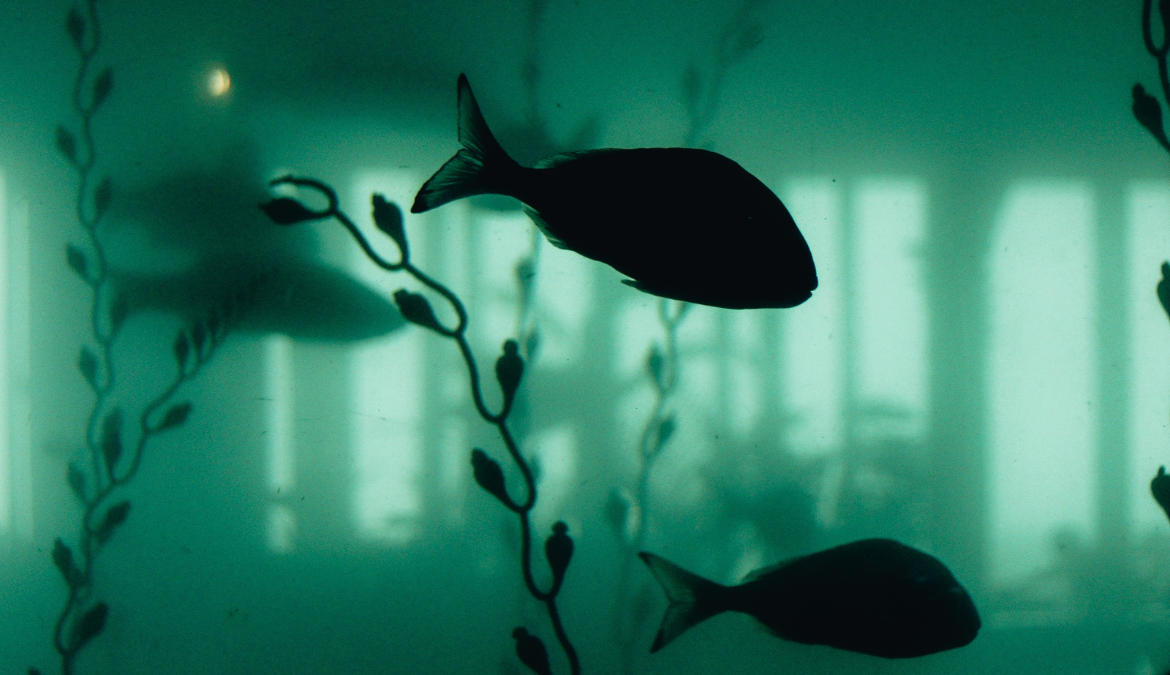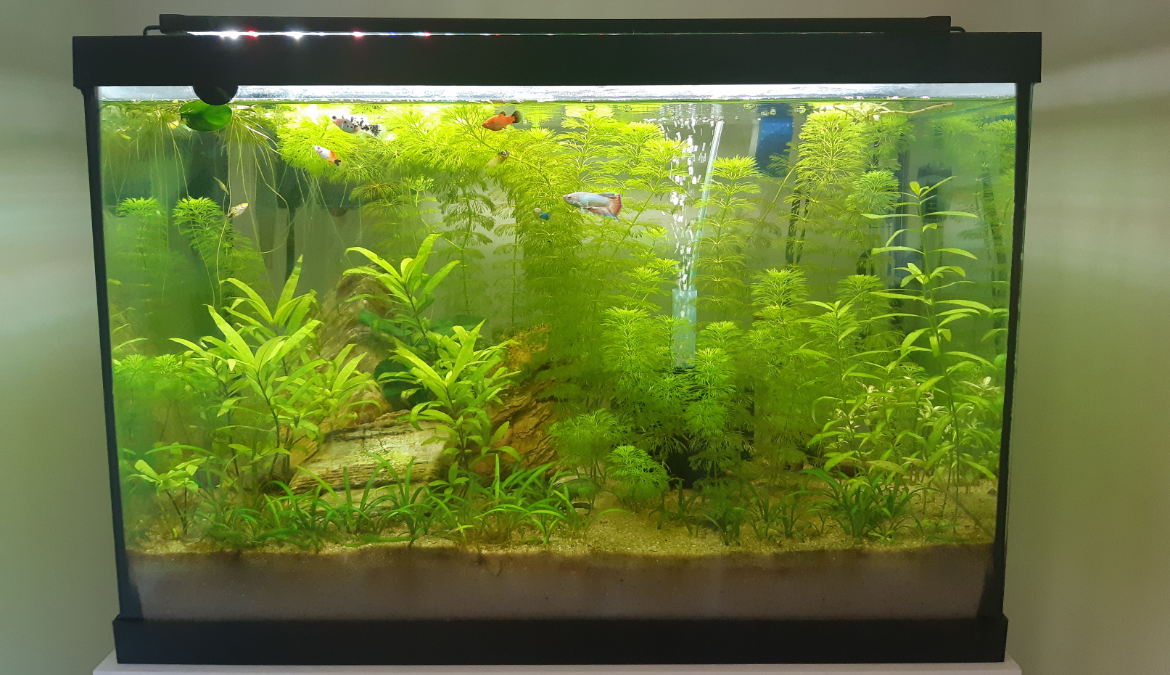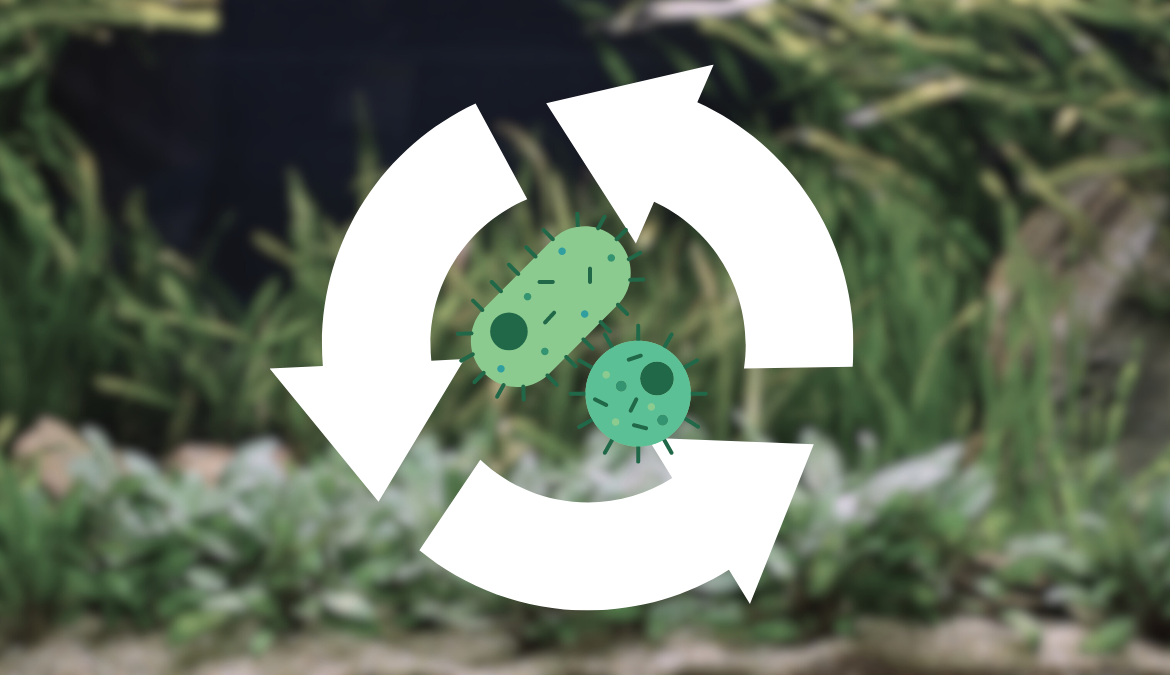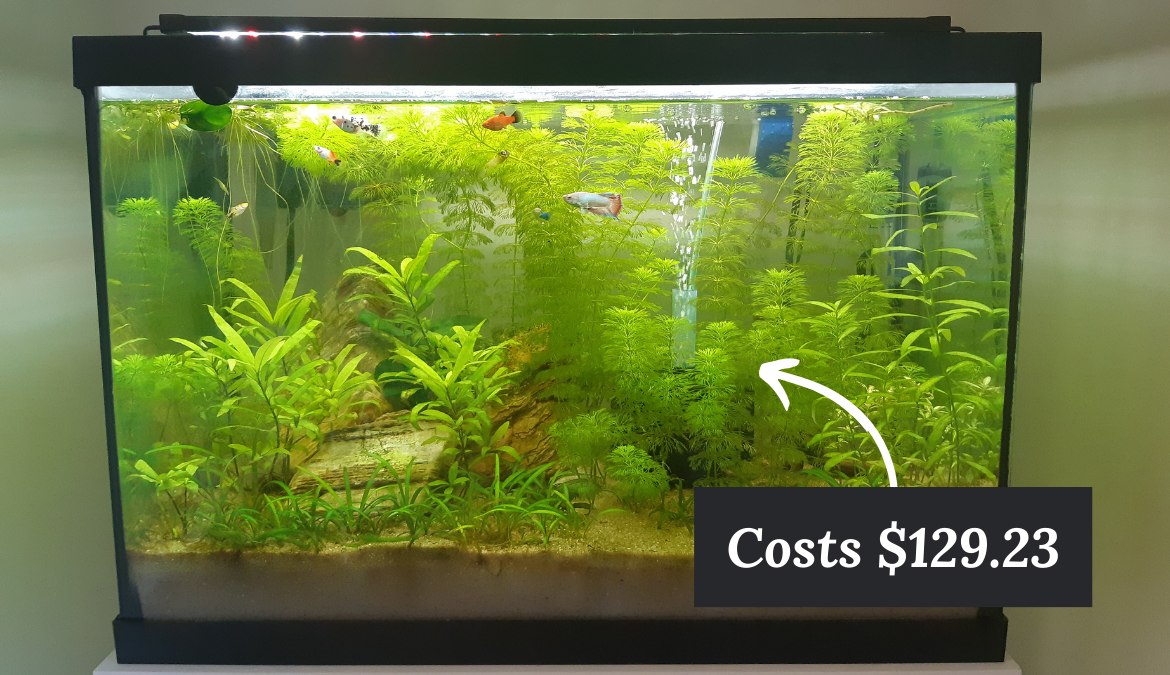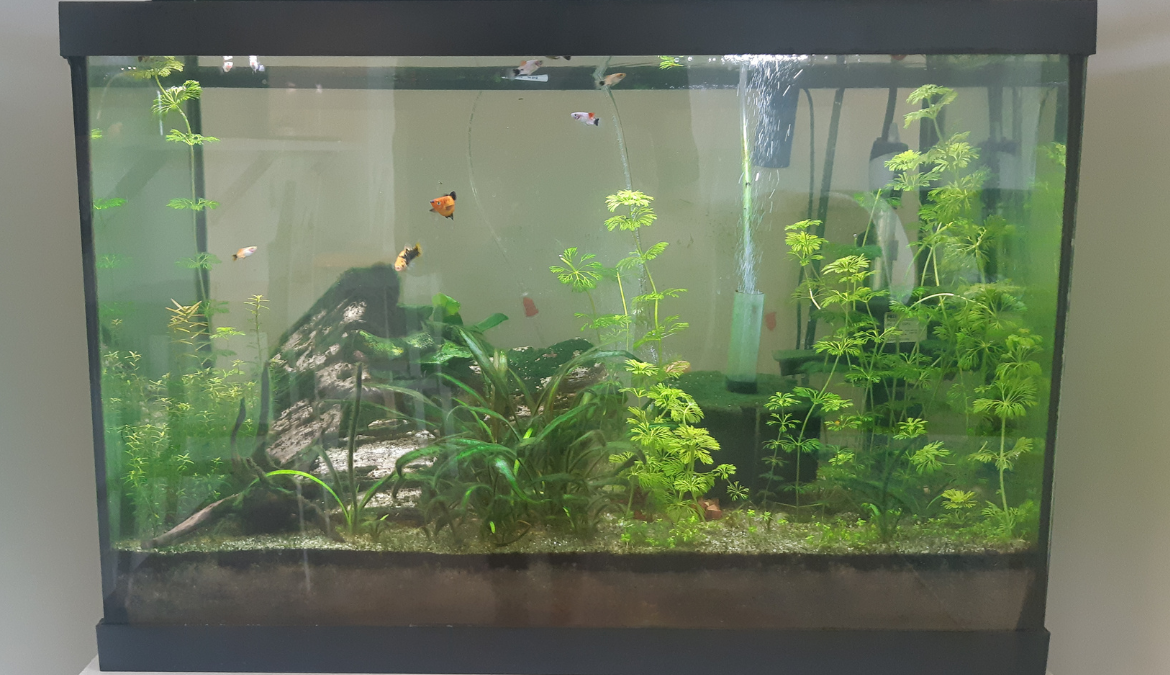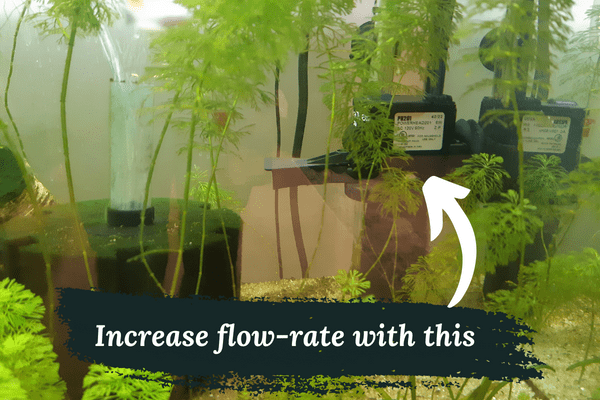Air stones are not necessary for planted tanks. But they are useful for replenishing CO2 in the water by increasing surface agitation. This is especially important for low-tech tanks that have a limited CO2 concentration. Air stones also help to circulate nutrients and break up surface film.
An air stone is a very useful tool for most planted aquariums. But there are some things to consider to provide your plants with an optimal growing environment.
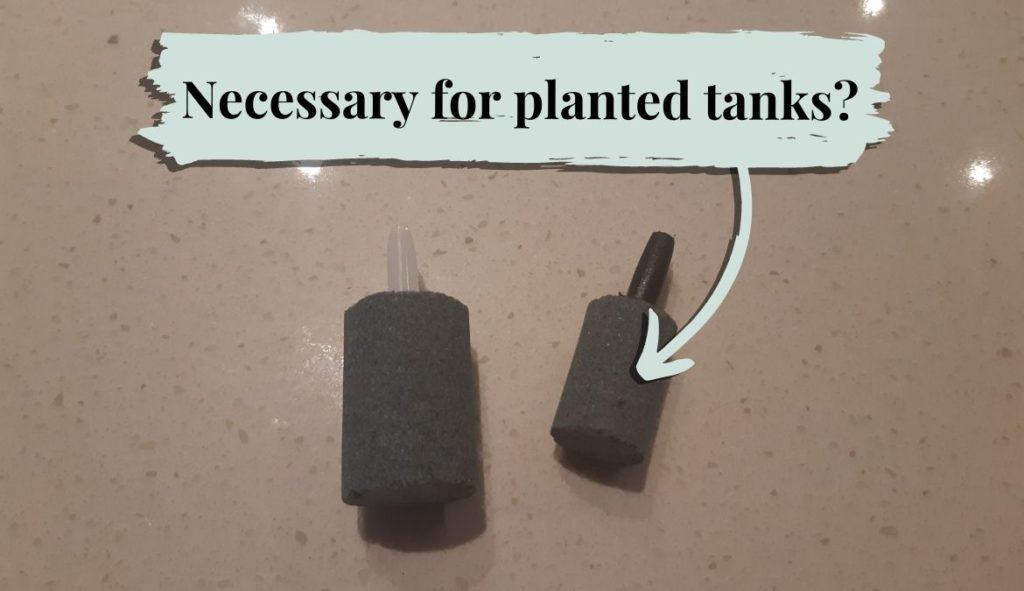
Contents
Does an air stone help plants grow?
Air stone can indirectly help aquarium plants grow by replenishing CO2 that the plants use for photosynthesis. They also circulate a small volume of water throughout the tank, which is crucial for distributing fertilizer and other nutrients.
But the air bubbles created by air stones do not interact with the plants in a way that directly benefits their growth.
What do air stones do?
First of all, let’s define what an air stone is. An air stone is a small device that creates bubbles in water, which helps oxygenate the water and also agitate it. This makes the water better for fish, but also for plants.
Air stones are made of hard plastic or ceramic, and they are hollow so that they can hold air inside them. Air stones come in many shapes and sizes; some have holes in their sides to allow better aeration, while others have holes on top to allow them to be attached to an air pump.
The air stone is attached to air line tubing, which is connected to an air pump. The pump sends air through the tube and forces it through the tiny holes in the air stone. These bubbles then float to the surface of an aquarium and pop.
Should you use air stones in your planted tank?
We use air stones in all of our planted tanks and recommend that you try it as well. Specifically, we put our air stones inside sponge filters, will allow the sponge to act as a source of filtration for the tank as well.
We have a 10 and 20-gallon planted tank and find that sponge filters with air stones work exceptionally well for filtration and aeration our 20-gallon tank:
Advantages of using air stones in planted aquariums
Air stones replenish CO2 via surface agitation
Air stones help add CO2 to tanks that have been depleted of it. CO2 is crucial for healthy plant growth. It is absorbed into a plant’s chlorophyll and converted into glucose and used as energy for plant growth.
Some tanks may become depleted of CO2 if there is a large volume of healthy and growing plants. As a result, continued plant growth may be difficult until more CO2 has been exchanged into the water column.
Now, CO2 does naturally equilibrate at the surface. The concentration of atmospheric CO2 and tank CO2 are constantly trying to achieve a balance between each other – this happens via something called gas exchange.
But the rate at which this gas exchange occurs depends on the total surface area between the water and air. This is where an air stone comes into play:
Air stone bubbles pop at the surface and create turbulence, or surface agitation. This increases the total available surface area for gas exchange to happen.
In short, air stone help gas exchange happen more quickly, which is a good thing.
Air stones increase oxygen in the tank
Air stones cause oxygen levels to increase because of the same gas exchange process discussed above for CO2. Oxygen is not really that important for aquarium plant growth. But it is crucial for your fish.
Air stones allow for the movement of plant nutrients in small tanks
Air stones will allow plants to take in available water column nutrients by creating some water circulation throughout the tank. Without any water flow, nutrients will float in place and will not be taken up by plants.
This will cause plants to slowly die or suffer from nutrient deficiency. It also allows opportunistic algae to grow rampant and consume these unused nutrients.
Stagnant water will also contain less or no oxygen as well, which is bad news for aquatic life.
Air stones allow for gas exchange by breaking up surface film
If you have an aquarium with stagnant water, you might have noticed a layer of film developing on the surface. This is usually caused by oils and proteins from fish food and other sources.
The film itself is usually not too harmful for plants or fish. But this film can prevent gas exchange from happening at the surface. This means that no CO2 or oxygen can be replenished into the water column.
This is bad for both your fish and plants. Air stones easily break up this film with surface agitation.
Disadvantages of using air stone in planted aquariums
Air stones might not produce enough water flow for larger tanks
Although air stones do create some water flow, they often don’t create enough circulation for larger tanks.
Most planted tank keepers recommend a turnover rate of about 4-6x. This means your filter will move 4-6 times the total volume of your tank every hour. For example, it would turnover 40 gallons per hour for a 10 gallon tank.
We use a 0.2W USB air pump with our air stone. It’s the quietest and most compact air pump we could find for smaller sized tanks. This is perfect for operating a sponge filter or a lone air stone.
However, we are considering adding a powerhead to our 20-gallon tank because we noticed this air stone might not be generating quite enough water circulation in this tank.
They do not provide filtration
Air stones do not provide a source of filtration for your tank on their own. This means you still need to add a filter, which could provide the benefit of having an air stone.
For example, you might be considering an air stone to add surface agitation. But you can also generate agitation with a hang-on-the-back filter. So an air stone might not be necessary for that specific purpose.
We choose to attach our air stones to sponge filters so we can achieve both surface agitation and filtration with a single device.
Air pumps can be noisy
The air pumps that run air stones can be somewhat noisy depending on their size. We’ve experimented with several air pumps and have found that the micro USB air pumps are the quietest.
If you have a larger tank then a micro USB air pump might not have enough power to properly aerate your tank. You might need to buy a larger and more noisy pump, which isn’t always a great option for tanks that exist in family rooms and other common living areas.
Are air bubbles good for plants?
The bubbles themselves are neither good nor bad for aquatic plants. The bubbles are useful because they float to the surface and create agitation. And these bubbles create more agitation than most hang-on-the-back filters.


